The entire market has been talking about investing in a more socially responsible way for several years now. While investment strategy decisions now beginning to incorporate ESG factors, Matt Bale at Moody’s Analytics explores how asset managers, and their clients, can really understand and report on the impact of their decisions.
It seems that every man and their dog are talking about ESG investing right now. When someone of the stature of Larry Fink publishes an annual letter that sounds like it could have been written by Greenpeace one needs no further evidence that ESG is front of mind for investors. But as with any hot topic in the investment world, it is important to cut through all the noise to find out exactly what those golden nuggets are that can genuinely assist a portfolio managers ESG investment strategy.
While numerous large scale asset managers have an ESG component as part of their existing attribution systems, it is fair to say that most are still not 100% confident in being able to quantify their investment edge. One of the reasons for this is that, traditionally, fund managers have experienced challenges with running increasingly complex calculations. Often due to the sheer size of the portfolio, they have been unable to run the required calculations fast enough – leaving the portfolio manager without those all-important numbers when they turn up to the trading desk the next morning.
But what is a portfolio manager could get an instant view on the overall decomposition of their ESG investment decisions? As a case in point, the portfolio manage could get insights showing that 60bps basis points came from environmental decisions, 20bps from social, and 20bs on governance. This effectively means the portfolio manager could pick one classification from an ESG product and immediately receive results based on the classification.
It is exactly this granular level of analysis that can be genuinely insightful when applied to portfolios that are taking positions in ESG investments that could be deemed high risk. Without a detailed understanding of the sources of active ESG investment that may exist in a portfolio, a portfolio manager is unlikely to be able develop a repeatable investment strategy that adds value over a sustained period time. Even for an investor that is not only focused around ESG, but this type of approach could also be useful when it comes to understanding exposure to an investment area that is clearly generating high levels of market interest.
In a world of increasing investor scrutiny around ESG, portfolio managers really have no choice but to be able to articulate their investment decision making concisely. To achieve this, tools and technology must be tailored to reflect the way that each individual manager makes decisions. The solution needs to be able to look across multiple managers and at the same time beyond the front office. PFaroe Attribution is the smartest way to gain insights into an investor’s portfolio to not only understand what is driving performance and slice/dice results in the way you want them, but also to rerun the attribution in real-time which can also be shared interactively with clients.




